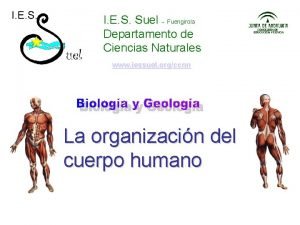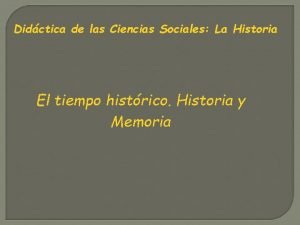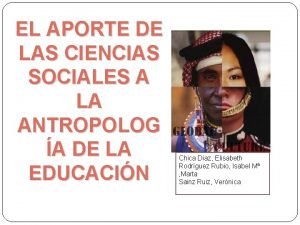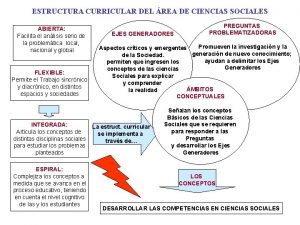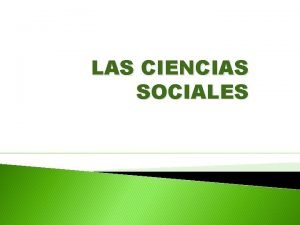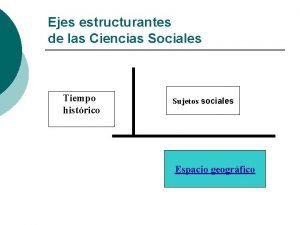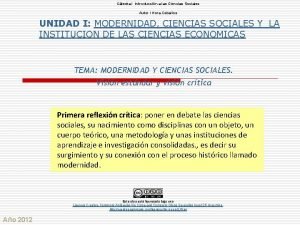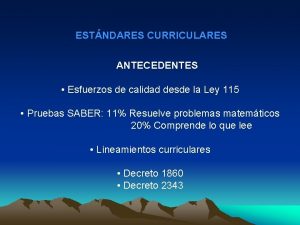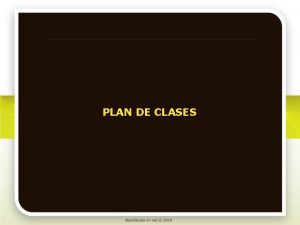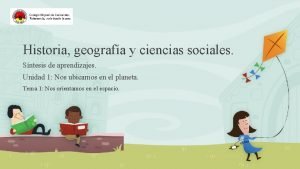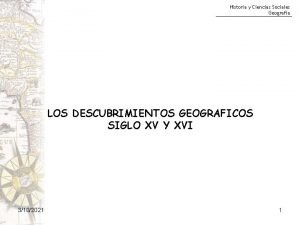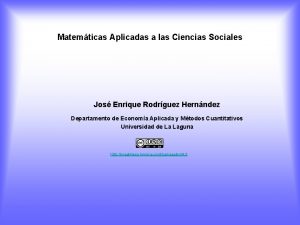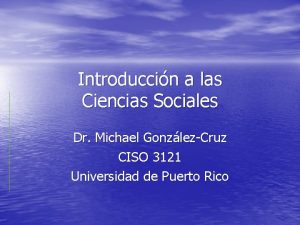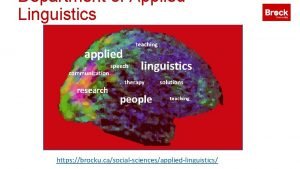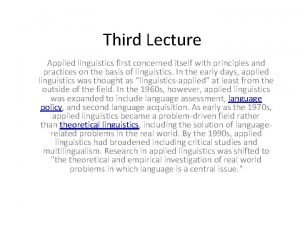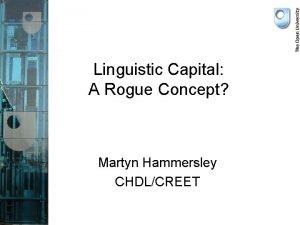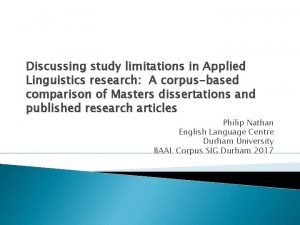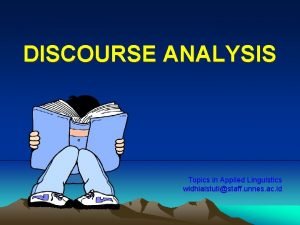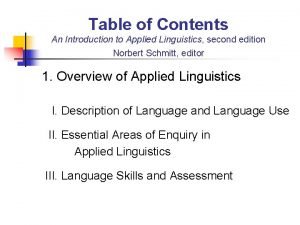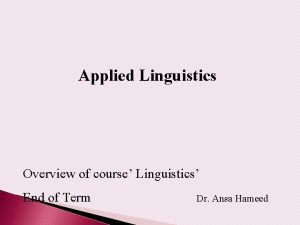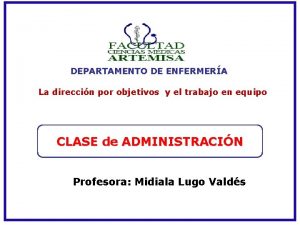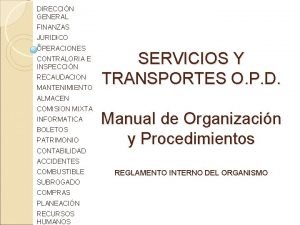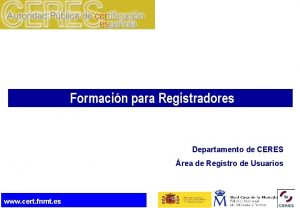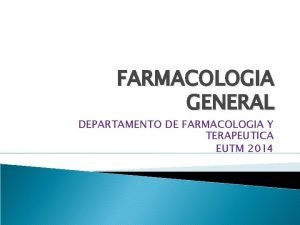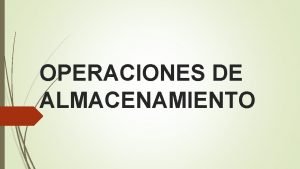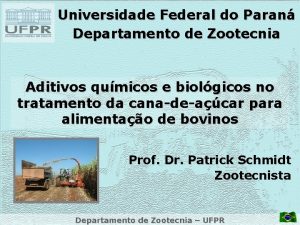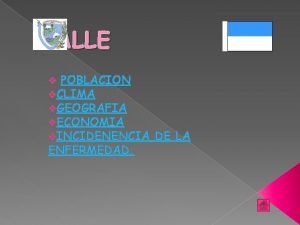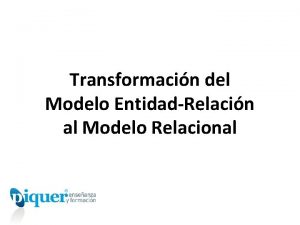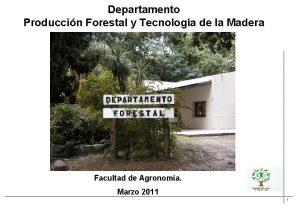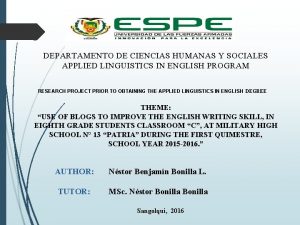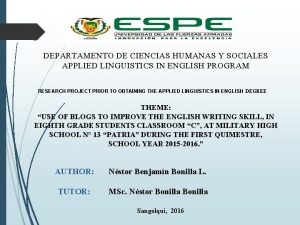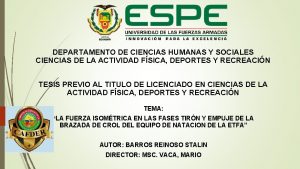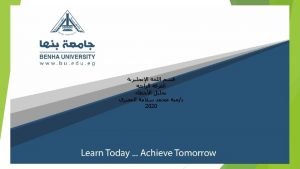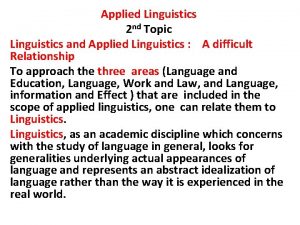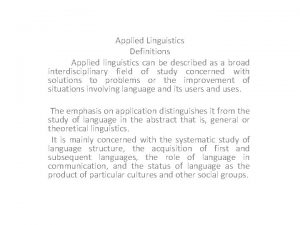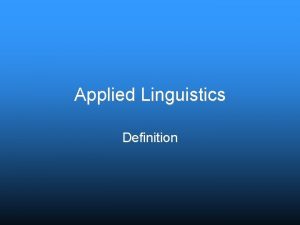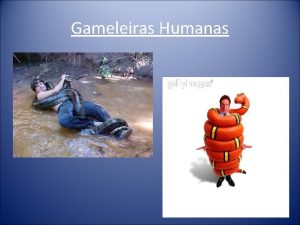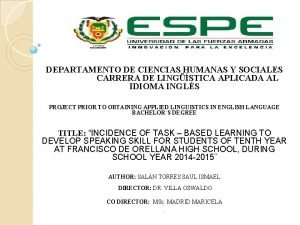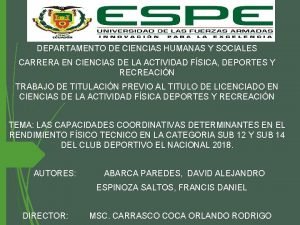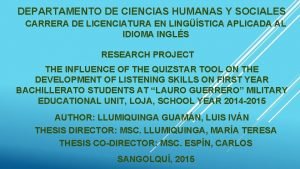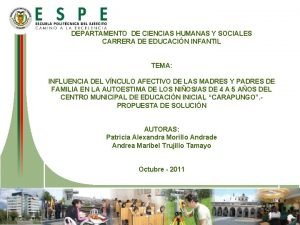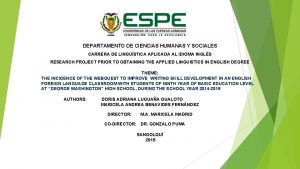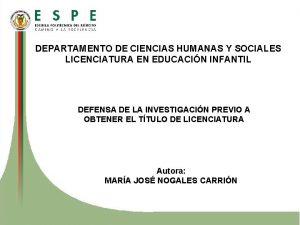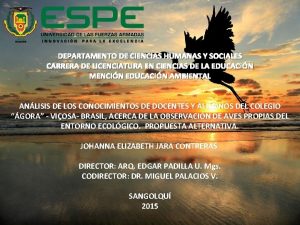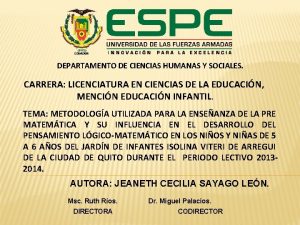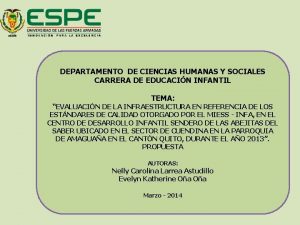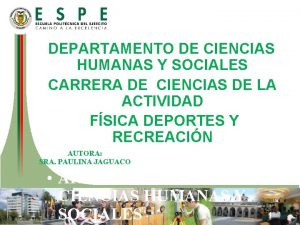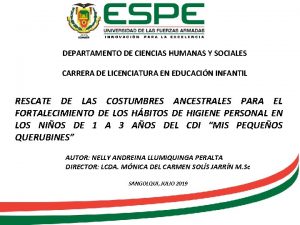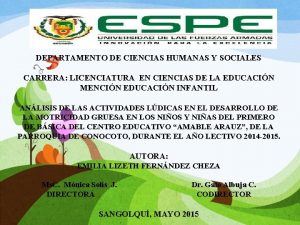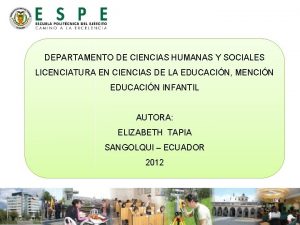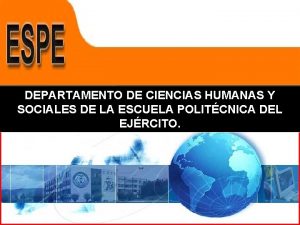DEPARTAMENTO DE CIENCIAS HUMANAS Y SOCIALES APPLIED LINGUISTICS




































- Slides: 36

DEPARTAMENTO DE CIENCIAS HUMANAS Y SOCIALES APPLIED LINGUISTICS IN ENGLISH MAJOR RESEARCH PROJECT PRIOR TO OBTAINING THE APPLIED LINGUISTICS IN ENGLISH DEGREE THEME: “INFLUENCE OF COLLABORATIVE LEARNING ON THE DEVELOPMENT OF WRITING SKILLS WITH SOLDIERS FROM THE FIRST YEAR CANDIDATES’ COURSE, CLASSROOM “I” AT ESFORSE DURING THE FIRST SEMESTER 2015” AUTHOR: Miguel E. Cunalata Chango TUTORS: Director: Dr. María T. Llumiquinga, Mg. Co-Director: Mg. Carlos M. Espín Quito, diciembre 2015

This project is based on the study carried out by Hussein Meihami (February 2015)

PART ONE RESEARCH PROBLEM

PROBLEM IDENTIFICATION

PROBLEM FORMULATION Will Collaborative Learning influence the development of the writing skill with first year soldier candidates, classroom “I”, at ESFORSE, during the first semester 2015?

VARIABLES MATRIX INDEPENDENT VARIABLE THE COLLABORATIVE LEARNING DEPENDENT VARIABLE THE WRITING SKILL From this chart, General and Specific objectives were set up, and the Theoretical Framework was formulated.

GENERAL OBECTIVES To determine the influence of the Collaborative Learning Approach on the development of English writing skills. To apply Collaborative Learning as an Approach to develop English Writing skills.

To prove that soldier candidates at ESFORSE can improve their English Writing skills through Collaborative Learning. ESPECIFIC OBJECTIVE S To encourage soldiers at ESFORSE to use Collaborative Learning to improve their writing skills. To propose a workshop to train the English teachers about the use of the Collaborative Learning approach to improve writing skills.

JUSTIFICATION The importance of English Foreign Language Low competence in English writing skill Students work better when they work in pairs or groups Collaborative Learning helps to foster respect, friendship and the other values among the diverse groups of students

PART TWO THEORETICAL FRAMEWORK

History Location ESFORSE Mission It was founded in February, 1990 To train soldiers

DEFINITION ORIGINS COLLABORATIVE LEARNING TECHNIQUES GROUP FORMATION PROCESS CL is a didactic method where two or more students work together. According to Hulbert, each group member has to fulfill a role, it can help to foster inclusion, commitment, and efficiency.

WRITING SKILL DEFINITION WRITING COMPONENTS Ø Content Writing is a form of communication that allows people to put their feelings and ideas on paper, and to transfer meaning into convincing text. . Ø Organization Ø Grammar Ø Vocabulary Ø Mechanics (Shehadeh, 2011)

WRITING PROCESS PARAGRAPH STRUCTURE 1. Planning • Topic sentence 2. Drafting • Controlling idea 3. Editing 4. Final version It tells the reader about what is a paragraph. Informs the reader on the specific aspect of the topic Supporting sentences They give explanation, evidence, and reason for the claim. • Concluding sentence It is the last sentence in the paragraph. (How to teach writing) (Harmer, 2004)

COLLABORATIVE LEARNING ON THE DEVELOPMENT OF WRITING SKILLS Ø Languaging and Writing Skill: The Effect of Collaborative Writing on EFL Students’ Writing Performance (Meihami, 2015). Ø A Collaborative Writing Approach: Methodology and Student Assessment (Mulligan & Garofalo, 2011). Ø The Effectiveness of Using the Cooperative Language Learning Approach to Enhance EFL Writing Skill among Saudi University Students (Montasser, 2014) Ø Collaborative Writing in Summary Writing: Student Perceptions and Problems (Nooreiny Maarof, 2012).

HYPOTHESIS FORMULATION ALTERNATIVE HYPOTHESIS The use of Grammar Translation affects the development for improving writing skills with soldiers from the first year candidates’ course, classroom “I” at ESFORSE NULL HYPOTHESIS The application of Collaborative Learning does not affect the development of writing skills with soldiers from the first year candidates’ course, classroom “I” at ESFORSE WORKING HYPOTHESIS The application of Collaborative Learning directly affects the development of writing skills with soldiers from the first year candidates’ course, classroom “I” at ESFORSE

PART THREE METHODOLOGICAL DESIGN

TYPE OF RESEARCH AND DESIGN 2. POPULATION AND SAMPLE • Descriptive • Of field • Quasi-experimental Population 1200 soldier candidates Sample 64 soldier candidates

FIELD WORK Arithmetic means of score To set the objectives. And test de hypothesis (pre-post test) Then, tests and 4 activities (Writing rubric (0 -5))

Descriptive statistics was used to process (P-P) The arithmetic mean and T-student were implemented for the hypothesis test in order to establish if the pattern of frequency observed in students corresponded to expected pattern.

PART FOUR TESTING THE HYPOTHESIS GRAPHICAL EXPOSITION OF RESULTS

PRE – TEST RESULTS Both groups reached a low competence in the pre-test

MEANS OBTAINED WITH THE EXPERIMENTAL GROUP Learners improved their writing skill using collaborative learning techniques from one activity to another. They started with a low mean but reached a high performance.

ACTIVITIES USING COLLABORATIVE LEARNING TECHNIQUES WITH THE EXPERIMENTAL GROUP Soldier candidates using collaborative strategies in writing activities in classroom. Students work better in the problem solutions and share ideas and opinions about given topic.

CONTROL GROUP PRE-TEST VS. POST-TEST The Control group did not improve their writing skills from the pre-test to the post -test

EXPERIMENTAL GROUP PRE-TEST VS. POST-TEST The experimental group improved significantly with the use of collaborative learning techniques on writing skills.

POST – TEST RESULTS CONTROL VS. EXPERIMENTAL The post test showed how the CL was an effective tool with respect to the development of writing skills in 5 issues in the experimental group.

HYPOTHESIS TESTING STATISTICAL MODEL AND CALCULATION OF THE T-STUDENT T-student Formula= Informative data: S 1= Square deviation of the pre-test S 2= Square deviation of the post-test N 1= Number of soldier candidates in the pre-test N 2= Number of soldier candidates in the post-test gl (N 1 -N 2 -2)= Degrees of freedom

DATA TO CALCULATE T-STUDENT: N 1= 32 N 2= 32 S 1= 152 S 2= 49. 84 T-student= √((S 1+S 2)/(N 1+N 2 -2)) T-student = √((152+49, 84)/(32+32 -2)) T-student = 1. 80 Determination of the technical and statistical test gl = N 1+N 2 -2 = Degrees of freedom gl= 32+32 -2 gl= 62 Degrees of freedom

That rounded is 1. 67 With a Confidence level of 95% (0. 05)

POST-TEST T- STUDENT ANALYSIS T-student calculated at 1. 80 is greater than T-student tabulated of 1. 67 which means it is outside the area of acceptance. The results of the T-student of this application let us state that the null hypothesis is rejected.



PART FIVE PROPOSAL

The proposal consists in: Ø Organizing a workshop for training teachers to develop and implement collaborative learning approach in order to improve writing skills at ESFORSE. Ø The training will carry out in December of this year.

THANKS FOR YOUR ATTENTION
 Applied linguistics
Applied linguistics Ies suel naturales
Ies suel naturales Traditional linguistics and modern linguistics
Traditional linguistics and modern linguistics Fondos lindos
Fondos lindos Aportes de la antropología a las ciencias sociales
Aportes de la antropología a las ciencias sociales Ciencias sociales
Ciencias sociales Ejes generadores de ciencias sociales
Ejes generadores de ciencias sociales Arnold toynbee
Arnold toynbee Cuales son los ejes estructurantes de las ciencias sociales
Cuales son los ejes estructurantes de las ciencias sociales Autor
Autor Ejes generadores de ciencias sociales
Ejes generadores de ciencias sociales Plan de clases de ciencias sociales
Plan de clases de ciencias sociales Este oeste norte sur
Este oeste norte sur Descubrimientos geograficos de las ciencias sociales
Descubrimientos geograficos de las ciencias sociales Recortes de ciencias sociales
Recortes de ciencias sociales Ejes estructurantes de las ciencias sociales
Ejes estructurantes de las ciencias sociales Que investigan las ciencias sociales
Que investigan las ciencias sociales Ciencias sociales
Ciencias sociales Ciencia social moderna
Ciencia social moderna Brock university applied linguistics
Brock university applied linguistics Scope of applied linguistics
Scope of applied linguistics Applied linguistics
Applied linguistics Scope and delimitation
Scope and delimitation Discourse analysis in applied linguistics
Discourse analysis in applied linguistics Subfields of applied linguistics
Subfields of applied linguistics Applied linguistics
Applied linguistics Applied linguistics
Applied linguistics What is linguistics
What is linguistics Objetivos del departamento de enfermería
Objetivos del departamento de enfermería Organigrama de departamento de contabilidad
Organigrama de departamento de contabilidad Departamento ceres
Departamento ceres Departamento de farmacologia
Departamento de farmacologia Departamento solicitante
Departamento solicitante Departamento de zootecnia ufpr
Departamento de zootecnia ufpr Vclima
Vclima Atributos multivaluados en modelo relacional
Atributos multivaluados en modelo relacional Departamento forestal
Departamento forestal

